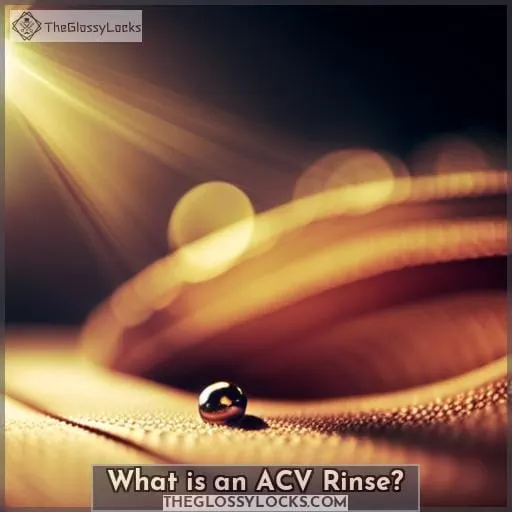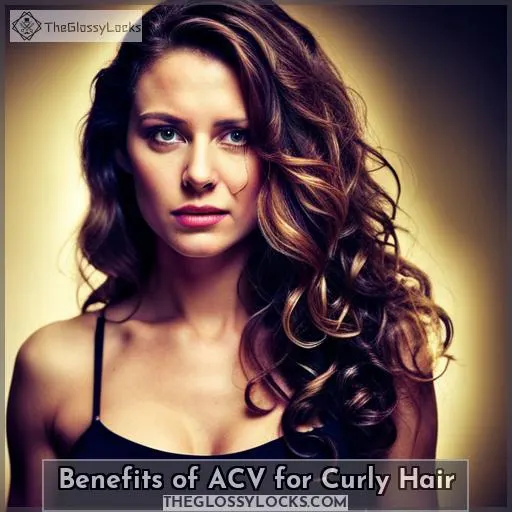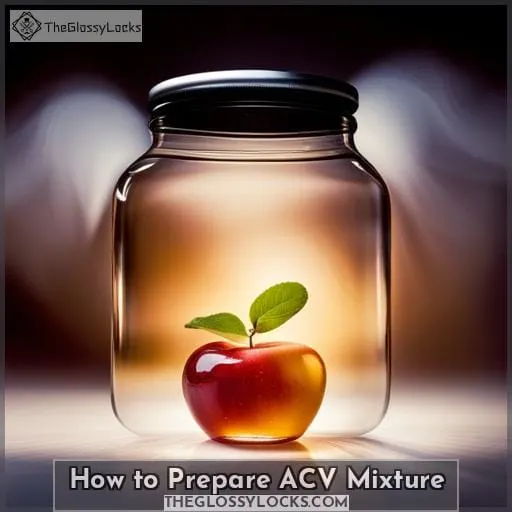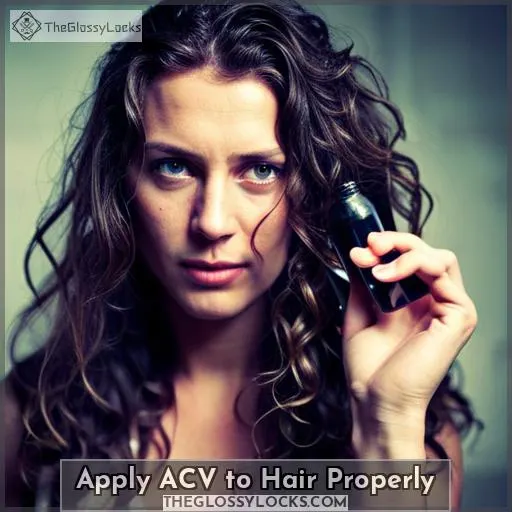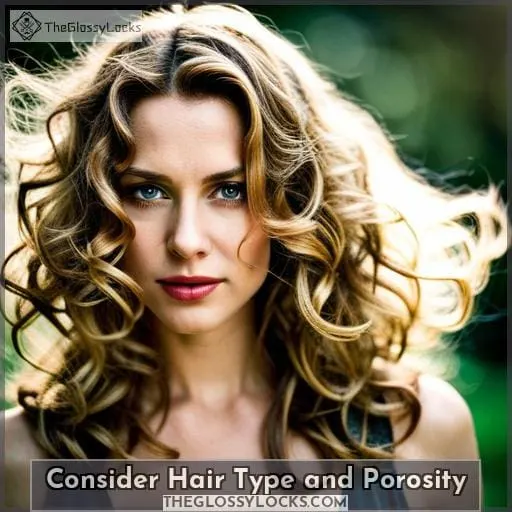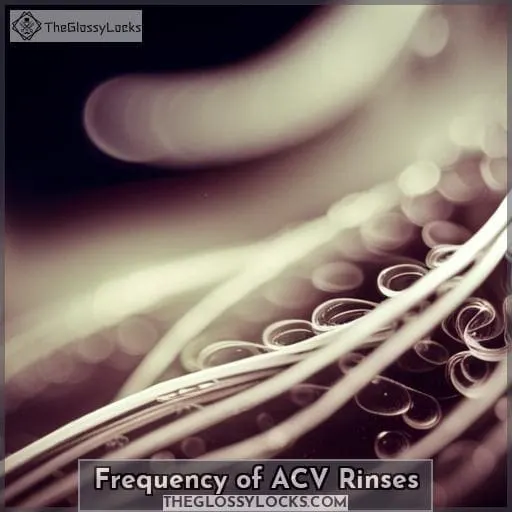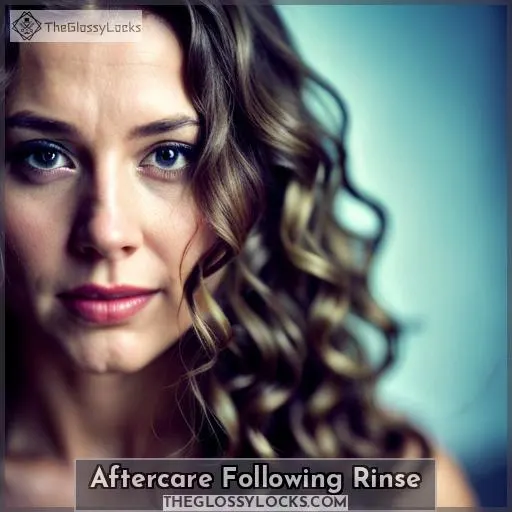This site is supported by our readers. We may earn a commission, at no cost to you, if you purchase through links.
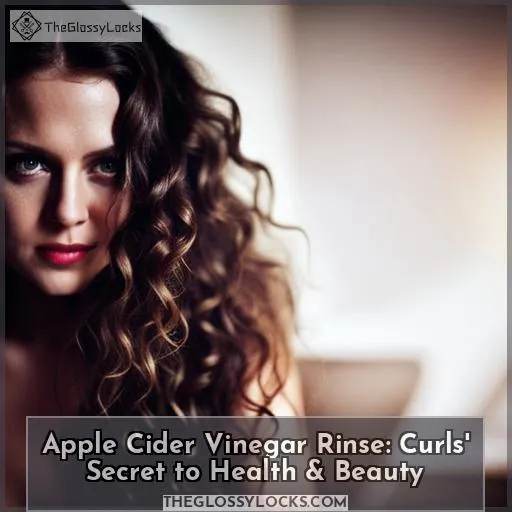
If you’re looking for a natural solution to restore your curls’ health and beauty, an apple cider vinegar rinse could be just what you need.
In this guide, we’ll explore:
- The benefits of ACV for curly hair
- How to prepare and apply an ACV rinse
- How to adjust the frequency of your rinses based on your hair type and porosity
Get ready to unlock your curls’ full potential with the power of ACV!
Table Of Contents
- Key Takeaways
- What is an ACV Rinse?
- Benefits of ACV for Curly Hair
- How to Prepare ACV Mixture
- Apply ACV to Hair Properly
- Consider Hair Type and Porosity
- Frequency of ACV Rinses
- Aftercare Following Rinse
- Frequently Asked Questions (FAQs)
- Can I use ACV rinse on color-treated hair without causing color fading?
- How long should I leave the ACV rinse in my hair before rinsing it out?
- Is it necessary to use a conditioner after an ACV rinse, or can I skip it?
- Can I use ACV rinse as a leave-in conditioner to enhance curl definition and reduce frizz?
- What are some alternative natural ingredients or products that can be used instead of ACV for a similar hair care effect?
- Conclusion
Key Takeaways
- ACV rinse balances pH, clarifies scalp, stimulates blood circulation, restores scalp health, and strengthens hair strands.
- Classic dilution ratio is 1 part ACV to 3 parts water, but adjust based on hair porosity.
- Apply ACV rinse to saturated hair, leave for a few minutes, then rinse thoroughly.
- Adjust frequency based on hair type and porosity, and use conditioner after rinse to replenish moisture.
What is an ACV Rinse?
With an apple cider vinegar rinse, you’re giving your curls a revitalizing treatment that enhances their natural beauty.
By gently balancing your hair’s pH levels, an ACV rinse restores its healthy shine and bounce.
The mild acidity of the vinegar helps remove buildup and impurities, leaving your scalp feeling refreshed and free of irritation.
Whether you prefer DIY variations or store-bought alternatives, incorporating an ACV rinse into your hair care routine can be a game-changer for transitioning hair, providing a natural and effective way to achieve healthy, radiant curls.
Benefits of ACV for Curly Hair
When you use ACV rinses, you’ll:
- Restore your hair and scalp’s pH balance, stimulating growth and improving blood circulation to your scalp.
- Clarify and exfoliate your scalp, removing product buildup and dead skin cells.
Balances PH
Your curly hair’s pH balance is restored using apple cider vinegar, a natural remedy that brings equilibrium to your scalp.
It gently removes product buildup, excess oils, and dirt, restoring your hair’s natural shine and bounce.
Say goodbye to scalp irritation and hello to a healthy scalp.
Embrace the power of ACV to balance your hair’s pH levels, leaving you with revitalized, manageable curls.
Stimulates Growth
Next, it’s found that ACV’s acidity helps stimulate blood circulation in your scalp, encouraging healthy hair growth.
Feature
Scalp Health
Hair Thickness
Hair Strength
Hair Growth
Embrace your curls’ newfound vitality with ACV’s hair growth stimulation powers.
How to Prepare ACV Mixture
Now, let’s dive into the art of crafting the perfect ACV elixir for your curly crown.
The key lies in achieving the ideal concentration, striking a harmonious balance between the vinegar’s potent properties and the water’s soothing embrace.
- Start with a classic dilution ratio of 1:3, blending one part ACV with three parts water. This gentle formula respects the delicate nature of your curls, avoiding any harshness that could strip away their natural oils.
- Experiment with different ratios to discover your hair’s sweet spot.
- If you’re blessed with resilient, high-porosity curls, you might find solace in a bolder 1:2 ratio, allowing the ACV’s invigorating touch to penetrate deeper into each strand.
- For those with low-porosity curls, a more diluted 1:4 ratio might be your saving grace, ensuring your hair doesn’t become weighed down or overwhelmed by the vinegar’s intensity.
Always remember, the goal is to achieve a harmonious union, where the ACV’s clarifying power dances in perfect harmony with the water’s moisturizing embrace.
Apply ACV to Hair Properly
To apply the ACV mixture to your hair properly:
- Start by saturating your scalp and hair with the mixture, gently massaging it in to ensure even distribution.
- Once your hair is fully coated, allow it to sit for a few minutes, enabling the ACV to work its magic and deliver its benefits to your curls.
Application Methods
Once you’ve mixed your ACV solution, you’ll want to work it through your hair.
You can do this by pouring the mixture over your head and massaging it into your scalp with your fingertips.
Make sure to work the mixture through the lengths of your hair as well.
Depending on your scalp sensitivity, you can adjust the dilution ratio.
Experiment with different application techniques to find what works best for you.
Follow up with your regular aftercare routine, focusing on adding moisture to your hair.
If you have color-treated hair, use the ACV rinse less frequently to prevent color fading.
Let It Sit
After massaging your scalp with the ACV mixture, allow it to rest in your hair for a few minutes before rinsing thoroughly.
This waiting period allows the ACV’s beneficial properties to penetrate your hair and scalp, offering maximum benefits.
The optimal leave-in time depends on your hair type and scalp sensitivity.
Start with a shorter duration, around 2-3 minutes, and gradually increase if your scalp can tolerate it.
The result? Enhanced hair shine, deep conditioning, detangling, and sealed cuticles.
Consider Hair Type and Porosity
Depending on your hair porosity, you’ll need to adjust how frequently you use an ACV rinse.
High porosity hair can benefit from weekly rinses to seal the cuticle and reduce frizz.
Low porosity hair may only need a rinse every few weeks to avoid protein overload.
Effect On Low Porosity
With low porosity hair, you’ll need to add more water to the ACV mixture and limit the frequency of your rinses to avoid protein overload.
Low porosity hair has a hard time absorbing moisture, so adding extra water helps with moisture retention.
Too much protein can lead to dryness and damage for low porosity hair types.
- Add more water to ACV mixture
- Limit frequency of rinses
- Focus on scalp exfoliation
When it comes to low porosity hair, maintaining a delicate balance between moisture retention and protein levels is crucial in order to promote healthy growth and prevent damage.
With its ability to improve both hydration levels while strengthening the strands, apple cider vinegar (ACV) rinse proves beneficial even in cases of this specific type of curly or wavy locks.
Low porous tresses have tightly packed cuticles that make it challenging for them to absorb enough moisture from external sources like conditioners or styling products, which can leave them feeling weighed down by product buildup without any real nourishing effects taking place at all.
However, using an apple cider vinegar solution as part of their routine will actually help encourage those stubbornly closed doors within each individual strand, allowing vital nutrients to enter where they’re needed most – deep into the roots themselves!
This means fewer breakages overall since there’s less chance of any one section becoming dry and brittle due to a lack of proper care over time too!
While utilizing an ACV rinse does wonders for boosting hydration and sealing off gaps along the shafts, thereby preventing further loss of natural oils essential for good health, long-term effects may vary depending upon factors such as texture, density, etcetera.
Nevertheless, keeping these points in mind when creating a personalized regimen tailored specifically towards addressing the unique needs associated with dealing with a particular mane style could prove quite rewarding indeed!
So why not give yourself the opportunity to experience the true liberation and power of mastery through knowledge and wisdom gained simply by incorporating this simple yet effective treatment into your regular haircare routine?
Effect On High Porosity
Your high porosity hair often craves moisture, so ACV rinses can help seal the cuticle and lock in hydration.
This protective layer prevents damage and breakage, giving you stronger, more elastic curls.
However, due to your scalp’s sensitivity, start with a diluted ratio and gradually increase the ACV concentration as tolerated.
If the scalp feels irritated, consider alternatives like lemon juice or black tea rinse.
Adjusting Frequency Accordingly
Depending on your hair’s porosity, you’ll want to tweak the frequency of your ACV rinses accordingly.
High porosity hair tends to absorb moisture and product buildup more easily, so you may need more frequent rinses to keep your hair healthy and balanced.
Low porosity hair, on the other hand, may only need occasional rinses to avoid protein overload.
Experiment with different frequencies to find what works best for your hair type and porosity.
Frequency of ACV Rinses
Now that you’ve tailored your dilution ratio to your scalp’s sensitivity and hair porosity, it’s time to consider how often you should bless your curls with this transformative rinse.
Start by introducing it once a week, allowing your hair to adjust and reveal its newfound vitality.
If your hair porosity is low, limit your ACV rendezvous to once every two weeks, as excessive use can lead to dryness.
Conversely, high porosity hair can bask in the ACV’s restorative powers more frequently, up to twice a week.
Just as you’d care for a delicate flower, your hair deserves the utmost attention after its ACV treatment.
Seal in the newfound moisture with a nourishing conditioner, allowing it to penetrate each strand and bestow softness and shine.
If you’re a color-treated goddess, take extra care to protect your vibrant locks by using a color-safe conditioner.
Embrace the power of ACV, but always prioritize the health and beauty of your crowning glory.
Aftercare Following Rinse
After the ACV rinse, follow up with a conditioner to replenish moisture and protect your color-treated hair from potential fading.
This will help keep your curls nourished, healthy, and vibrant.
Conditioner
Follow up with conditioner for your hair’s moisture.
This is a crucial step as ACV can be drying.
Use a conditioner designed for curly hair or make your own with natural ingredients like coconut oil, shea butter, or honey.
Leave-in conditioners can also be beneficial, especially for low porosity hair.
Experiment with different conditioners to find what works best for your curls.
Protect Color
To shield your vibrant locks from color fading, incorporate a color-safe conditioner into your post-rinse routine.
This essential step seals the hair cuticle, locking in your desired shade and preventing color molecules from escaping.
Embrace your power over your hair’s destiny, preserving its vibrancy and life with every wash.
Frequently Asked Questions (FAQs)
Can I use ACV rinse on color-treated hair without causing color fading?
Colored locks demand extra care.
ACV’s acidity may strip away color vibrancy, leaving you with a faded, lackluster mane.
Shield your chromatic crown by opting for gentler alternatives that won’t compromise your vibrant hue.
How long should I leave the ACV rinse in my hair before rinsing it out?
Unleash your hair’s untamed beauty with the power of ACV.
Let it linger like a gentle caress,
a few fleeting moments for deep rejuvenation,
then rinse, revealing a mane reborn.
Is it necessary to use a conditioner after an ACV rinse, or can I skip it?
After an ACV rinse, using a conditioner is crucial.
It replenishes moisture, restores pH balance, and amplifies your hair’s natural vibrancy.
Embrace this essential step for luscious, healthy locks.
Can I use ACV rinse as a leave-in conditioner to enhance curl definition and reduce frizz?
Unleash your curls’ inner power with an ACV rinse.
Banish frizz and unlock definition.
Embrace your natural texture, taking control of your hair’s destiny.
What are some alternative natural ingredients or products that can be used instead of ACV for a similar hair care effect?
Unleash your hair’s wild, untamed beauty with nature’s gentle touch.
Explore aloe vera’s soothing embrace,
coconut milk’s creamy caress,
or rosemary’s invigorating kiss.
Embrace your natural crown,
free from harsh chemicals,
and watch it flourish with vitality and shine.
Conclusion
As you embark on this journey with your curls, remember that patience and consistency are key.
The apple cider vinegar rinse is a natural remedy that can restore your curls’ health and beauty, but it takes time.
Embrace the process, and you’ll be rewarded with vibrant, bouncy curls that are the envy of all.
So, what are you waiting for?
Give your curls the gift of an apple cider vinegar rinse today!

